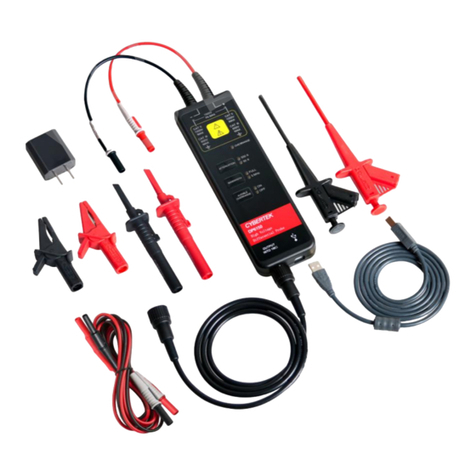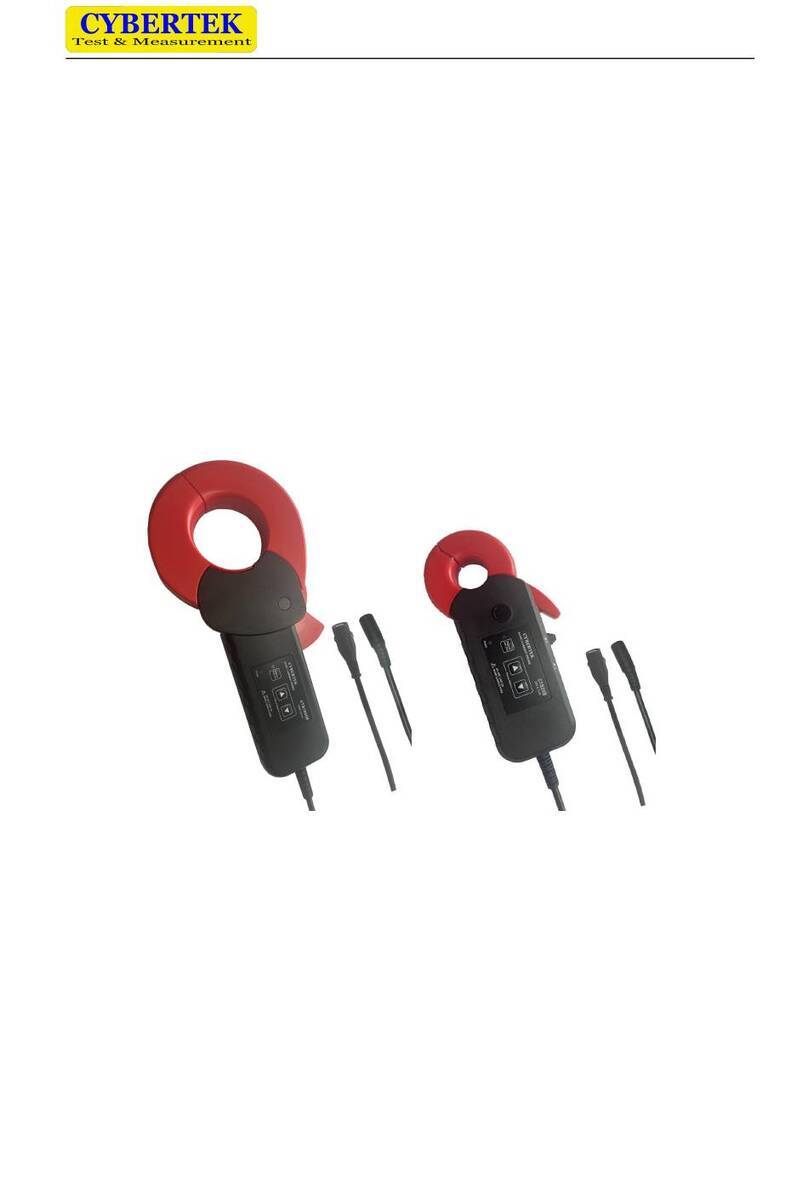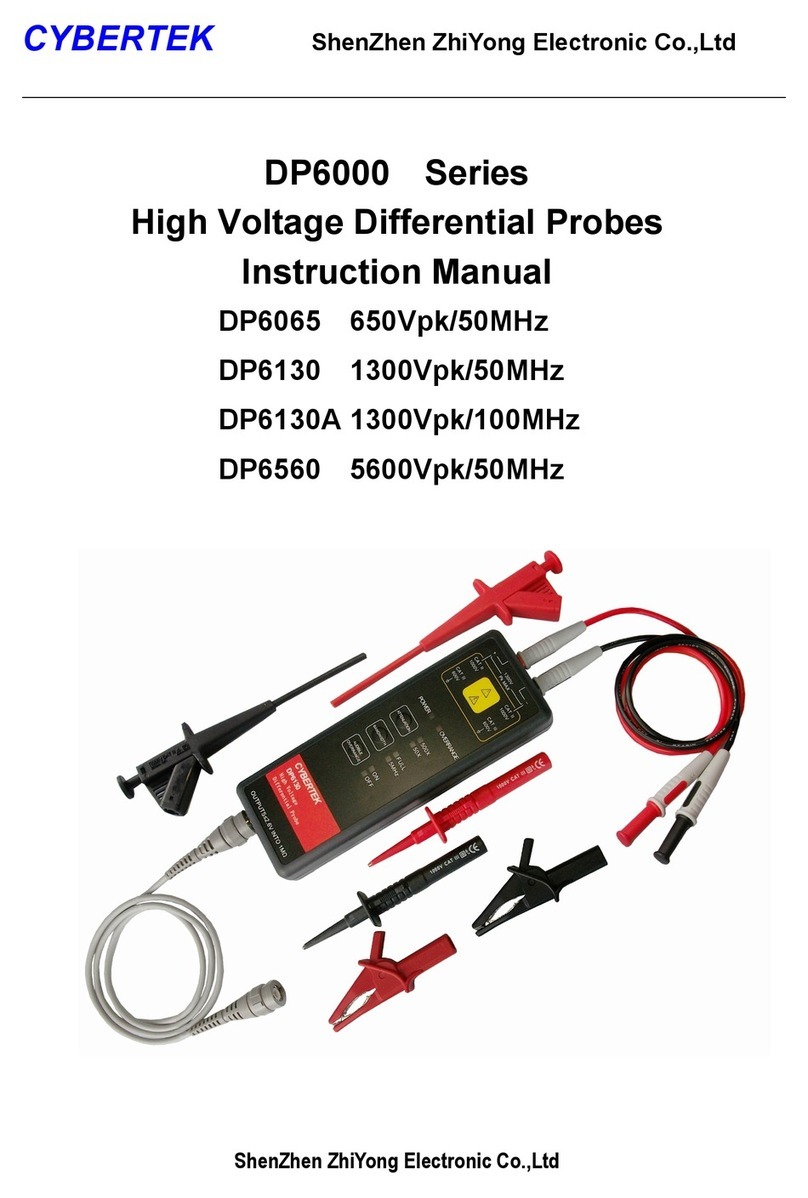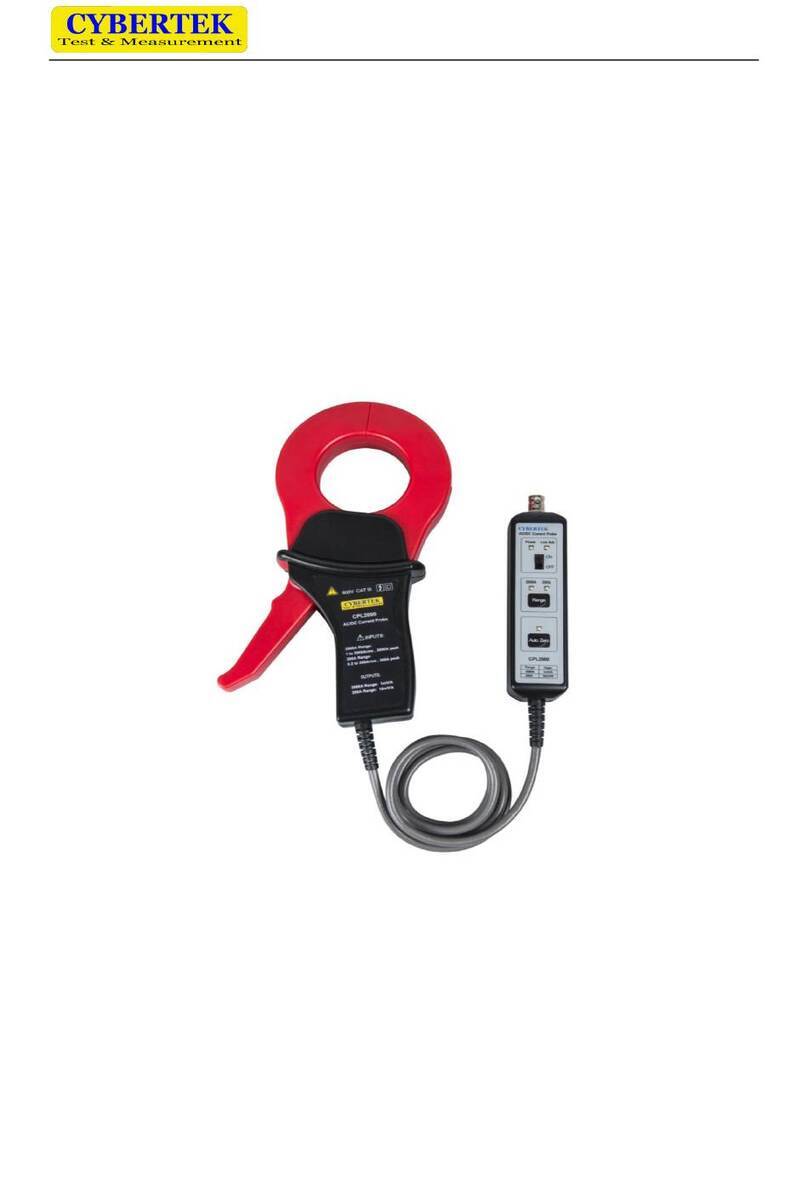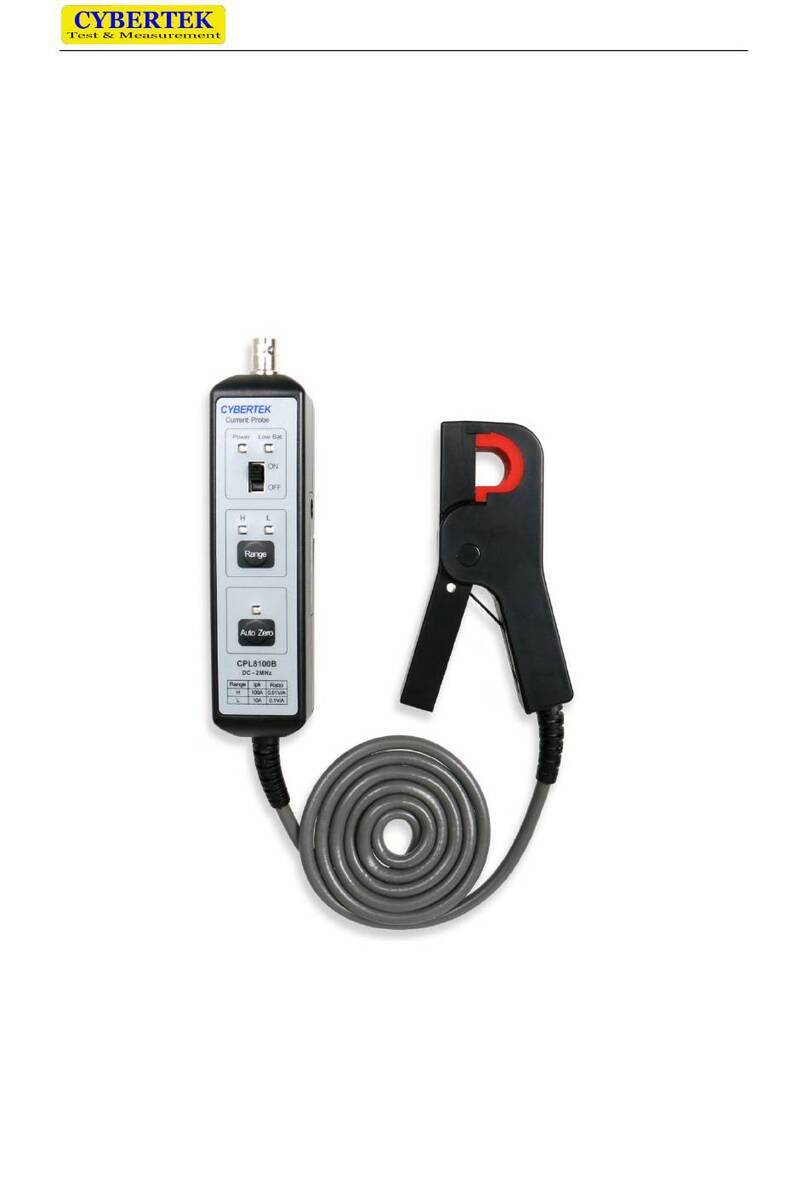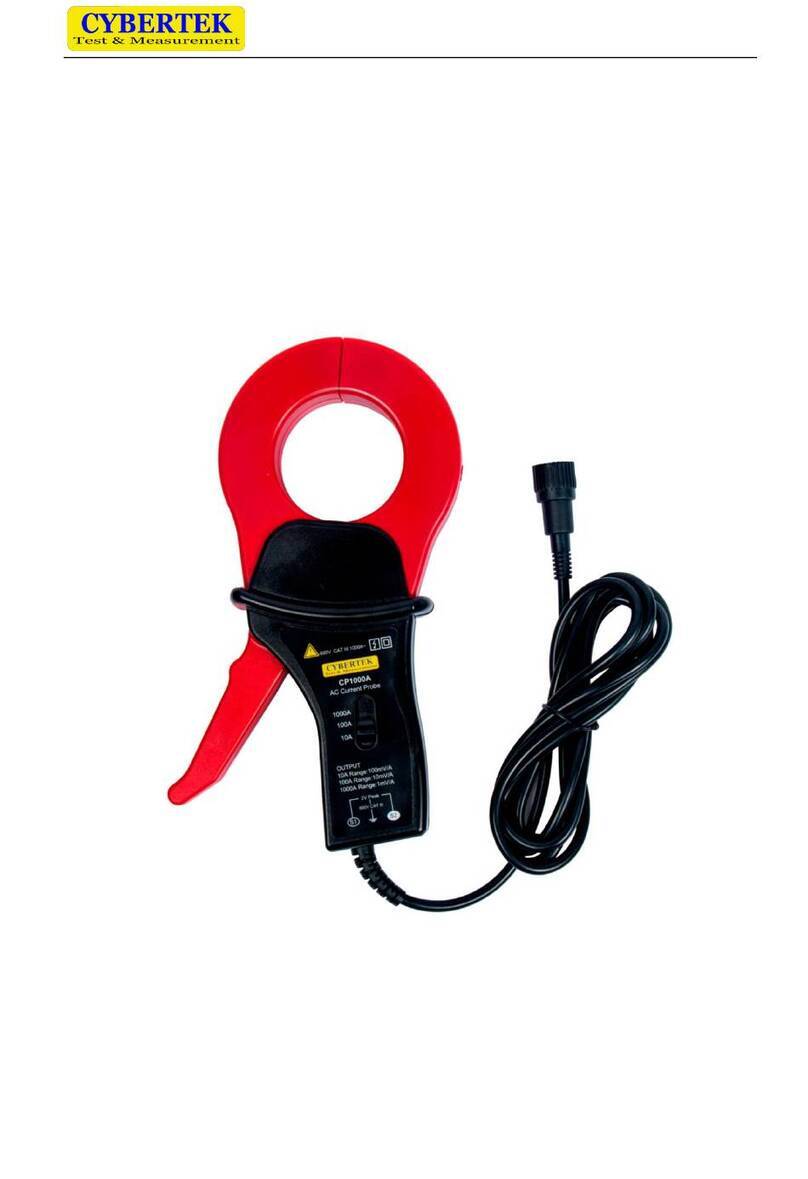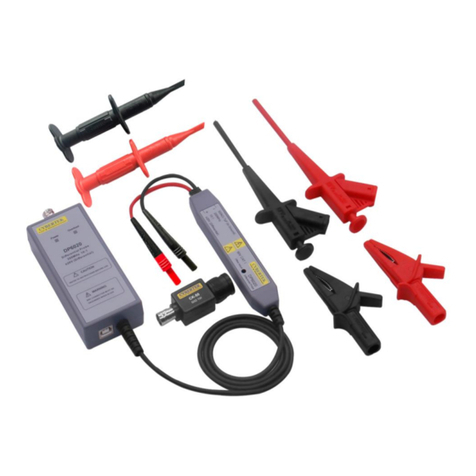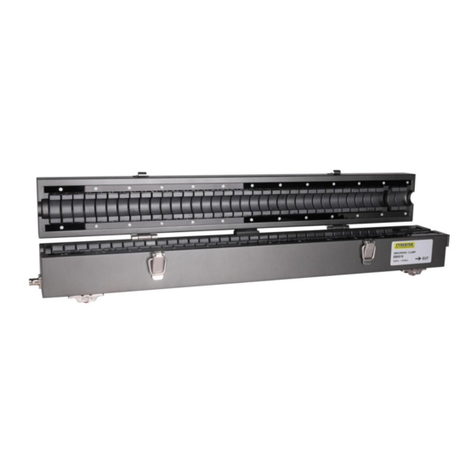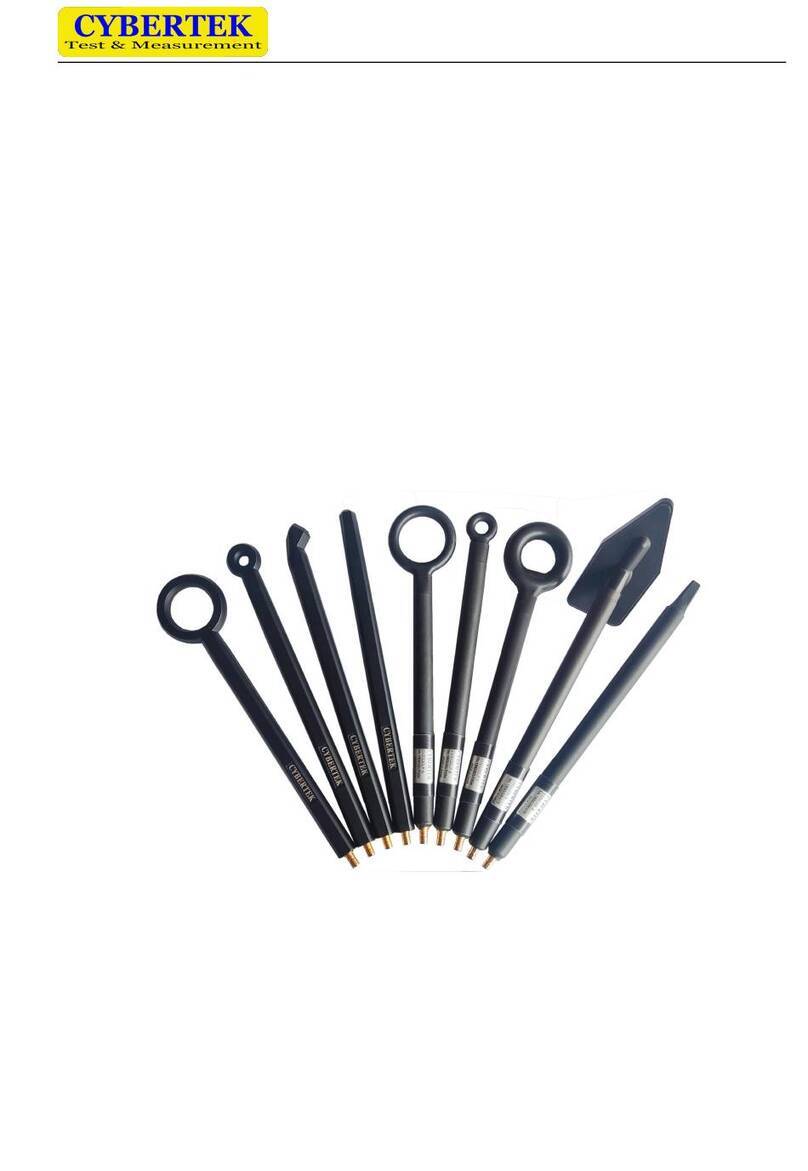
Shenzhen Zhiyong Electronics Co., Ltd
To avoid damage to the device, protect it from vibration or shock during transport and
handling, and be especially careful to avoid dropping.
Do not store or use the device where it could be exposed to direct sunlight, high temperature,
humidity, or condensation. Under such conditions, the device may be damaged and
insulation may deteriorate so that it no longer meets specifications.
Before using the device the first time, verify that it operates normally to ensure that the no
damage occurred during storage or shipping. If you find any damage, contact your dealer
or CYBERTEK representative.
This device is not designed to be entirely water- or dust- proof. To avoid damage, do not use
it in a wet or dusty environment.
The sensor head is a precision assembly including a molded component, a ferrite core, and a
Hall Effect element. It may be damaged if subjected to sudden changes in ambient
temperature, or mechanical strain or shock, and therefore great care should be exercised in
handling it.
The matching surfaces of the sensor head are precision ground, and should be treated with
care. If these surfaces are scratched, performance may be impaired.
Foreign substances such as dust on the contact surfaces of the sensor head can cause
acoustic resonance and degrade measurement, so it should be cleaned by gently wiping
with a soft cloth.
To avoid damaging the sensor cable and power supply cable, do not bend or pull the cables.
When the power is on, keep closed, except when clamping them onto the conductor to be
measured. The facing surface of the core section can be scratched while it is open.
Do not place any un-clamped conductor with an electric current of a frequency of 10 kHz or
more near the sensor head. Current flowing in the conductor nearby may heat up the
sensor head and cause its temperature to rise, leading to damage to the sensor. For
example, when one side of a go-and-return conductor is clamped and the other side is also
placed near the sensor head , even if the electric current is lower than the consecutive
maximum current, electric currents in both sides will heat up the wires and raise the
temperature, thereby causing damage to the sensor.
The maximum continuous input range is based on heat that is internally generated during
measurement. Never input current in excess of this level. Exceeding the rated level may
result in damage to the probe.
The maximum continuous input range varies according to the frequency of the current being
measured.
If excess current is input, generated heat activates a built-in safety function that blocks
normal output. If this happens, remove the input immediately (remove the sensor from the
conductor being measured or reduce the input current to zero). Wait until the sensor has
had sufficient time to cool before resuming operation.
